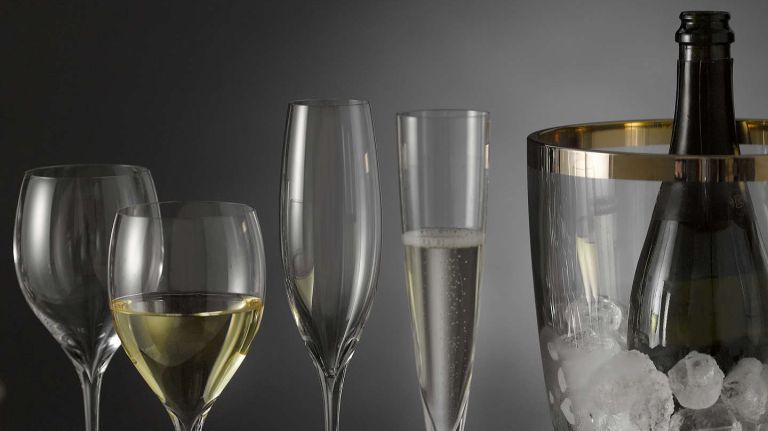
Champagne is a luxurious and celebratory drink that deserves to be enjoyed in style. While the taste of champagne is important, the type of glass used to serve it can also affect the taste and overall experience. There are several types of champagne glasses to choose from, each with its own unique shape and function. In this article, we will explore the most popular types of champagne glasses.

Types of Champagne Glasses
The flute glass is the most common type of champagne glass, and it is easily recognizable by its long, thin stem and narrow, elongated bowl. The shape of the flute glass is designed to preserve the carbonation and effervescence of the champagne by reducing the surface area exposed to the air. This makes the flute glass ideal for serving champagne at parties or events where the drink is meant to be consumed quickly.
Coupe glasses, also known as champagne saucers, were popular in the 1920s and 1930s and are now making a comeback. They have a wide and shallow bowl with a short stem. This type of glass was designed to showcase the bubbles and bubbles of champagne while allowing the drink to breathe and release its aromas. However, the wide surface area of the glass can cause the champagne to lose its carbonation quickly, making it less ideal for longer events or dinners.
Tulip glasses, also known as champagne flutes with a tulip shape, are a combination of the flute and coupe glass. They have a slightly wider bowl than the traditional flute glass and a tapered top, which helps to concentrate the aromas of the champagne. This type of glass is ideal for enjoying high-quality champagnes with complex aromas and flavors.
Wine glasses are not typically used for serving champagne, but they can work in a pinch. Wine glasses have a larger bowl and a shorter stem than the traditional champagne flute, which makes them more suitable for sipping champagne slowly and savoring its flavors. However, the wider surface area of the glass can cause the champagne to lose its carbonation more quickly.
Champagne coupes are similar to coupe glasses, but with a more rounded and wider bowl. They were popular in the early 20th century and were often used in Hollywood movies to depict glamorous parties. This type of glass is ideal for serving sweeter champagnes and cocktails, as the wider bowl allows for more room to add mixers and garnishes.
Conclusion
Choosing the right type of champagne glass can enhance the overall experience of drinking champagne. Whether you prefer the classic flute glass, the elegant tulip glass, or the glamorous coupe glass, there is a type of champagne glass for every occasion. Consider the style and function of each glass before making your selection and remember to drink responsibly. Cheers to a great champagne experience!
More Information:
